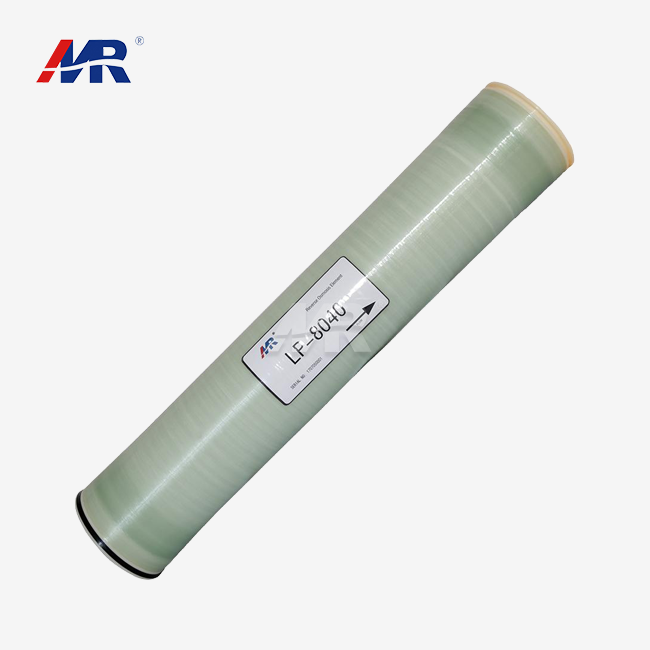Pretreatment Strategies for Longer Membrane Life
The longevity and efficiency of reverse osmosis membranes heavily depend on the quality of feed water they receive. Implementing robust pretreatment strategies is crucial for protecting these delicate membranes from premature fouling and degradation. Let's explore some advanced pretreatment techniques that can significantly extend membrane life and optimize performance:
Multi-Stage Filtration Systems
Implementing a multi-stage filtration system before the RO unit can dramatically improve feed water quality. This approach typically includes:
- Coagulation and flocculation to remove suspended particles
- Multimedia filtration for capturing larger particulates
- Activated carbon filtration to remove organic compounds and chlorine
- Microfiltration or ultrafiltration as a final polishing step
By progressively removing contaminants of varying sizes, multi-stage filtration significantly reduces the burden on RO membranes, extending their operational life and maintaining high flux rates.
Advanced Antiscalant Technologies
Scale formation is a persistent challenge in RO systems, particularly in applications dealing with hard water or high mineral content. Cutting-edge antiscalant technologies can prevent scale buildup on membrane surfaces, ensuring consistent performance. Modern antiscalants are designed to:
- Inhibit crystal formation of common scale-forming compounds
- Disperse existing particles to prevent aggregation
- Function effectively across a wide pH range
- Remain stable under various operating conditions
Selecting the right antiscalant formulation based on feed water analysis can significantly enhance membrane protection and system efficiency.
Biofouling Control Measures
Biological fouling poses a significant threat to RO membrane performance. Implementing comprehensive biofouling control measures is essential for maintaining system integrity. Effective strategies include:
- Ultraviolet (UV) disinfection to inactivate microorganisms
- Chlorination-dechlorination processes for bacterial control
- Membrane-compatible biocides for persistent biofilm prevention
- Regular membrane cleaning and sanitization protocols
By addressing biofouling proactively, operators can prevent the formation of biofilms that impede membrane performance and lead to increased energy consumption.
Monitoring and Maintaining Optimal Flow Rates
Achieving and maintaining optimal flow rates is crucial for maximizing the efficiency of RO membrane systems. Proper flow management not only ensures high water recovery rates but also prevents membrane damage and extends system lifespan. Let's delve into advanced techniques for monitoring and optimizing flow rates:
Real-Time Performance Monitoring
Implementing cutting-edge monitoring systems allows for continuous assessment of RO system performance. Key parameters to monitor include:
- Permeate flux rates
- Transmembrane pressure (TMP)
- Salt rejection rates
- Feed water quality indicators
Advanced monitoring solutions utilize IoT sensors and data analytics to provide real-time insights, enabling operators to make informed decisions and adjust operating parameters promptly.
Adaptive Flux Control Systems
Innovative flux control systems can dynamically adjust flow rates based on feed water quality and membrane performance. These systems:
- Automatically adjust pump speeds to maintain optimal flux
- Implement feed forward control based on incoming water quality
- Optimize recovery rates while preventing membrane fouling
- Reduce energy consumption by operating at the most efficient point
By implementing adaptive flux control, operators can ensure their RO systems consistently operate at peak efficiency, regardless of variations in feed water conditions.
Pressure Vessel Balancing
Ensuring uniform flow distribution across all membrane elements is critical for optimizing system performance. Advanced pressure vessel balancing techniques include:
- Computational fluid dynamics (CFD) modeling for optimal array design
- Use of flow distribution devices to equalize feed water across elements
- Regular permeate flow profiling to identify and address imbalances
- Implementing interstage booster pumps for multi-stage systems
Proper pressure vessel balancing minimizes localized fouling, ensures consistent membrane performance, and maximizes overall system efficiency.
Advanced Cleaning Techniques for RO Membranes
Even with optimal pretreatment and flow management, RO membranes will inevitably require cleaning to maintain peak performance. Employing advanced cleaning techniques can effectively remove foulants, restore membrane flux, and extend operational life. Let's explore some cutting-edge approaches to membrane cleaning:
Targeted Chemical Cleaning Protocols
Developing tailored cleaning protocols based on specific foulant types can significantly enhance cleaning effectiveness. Advanced approaches include:
- Foulant characterization through membrane autopsy and feed water analysis
- Customized cleaning solution formulations for specific contaminants
- Sequential cleaning steps to address multiple foulant types
- Optimization of cleaning parameters (pH, temperature, duration) for maximum efficacy
By implementing targeted cleaning protocols, operators can achieve superior foulant removal while minimizing chemical exposure and downtime.
Ultrasonic Enhanced Cleaning
Integrating ultrasonic technology into cleaning processes can significantly improve foulant removal efficiency. Ultrasonic enhanced cleaning:
- Creates microscopic cavitation bubbles that dislodge stubborn foulants
- Enhances chemical penetration into fouling layers
- Reduces cleaning time and chemical consumption
- Can be applied in-situ or in dedicated cleaning stations
This innovative approach is particularly effective for removing persistent organic and inorganic fouling, restoring membrane performance to near-original levels.
Osmotic Backwashing Techniques
Osmotic backwashing leverages the natural osmotic pressure differential to effectively clean membranes. This technique involves:
- Introducing a high-salinity solution to the permeate side of the membrane
- Creating a reverse flow that dislodges foulants from the membrane surface
- Implementing pulsed backwashing for enhanced cleaning efficiency
- Combining osmotic backwashing with traditional cleaning methods for optimal results
Osmotic backwashing offers a gentle yet effective cleaning approach, particularly suitable for membranes sensitive to harsh chemical treatments.
Conclusion
Optimizing the performance of reverse osmosis membranes is a multifaceted endeavor that requires a comprehensive approach. By implementing advanced pretreatment strategies, maintaining optimal flow rates, and employing cutting-edge cleaning techniques, operators can significantly enhance system efficiency, extend membrane life, and ensure consistent high-quality water production. As water treatment demands continue to grow across industries, mastering these optimization techniques becomes increasingly crucial for sustainable and cost-effective operations.
At Guangdong Morui Environmental Technology Co., Ltd, we understand the critical importance of maximizing RO membrane efficiency in various applications, from industrial wastewater treatment to seawater desalination and drinking water production. Our team of experts is dedicated to providing tailored solutions that address your specific water purification needs. With our state-of-the-art membrane production facilities and comprehensive range of water treatment equipment, we offer end-to-end solutions designed to optimize your RO system's performance.
Whether you're looking to upgrade your existing system or implement a new reverse osmosis plant, our team is here to support you every step of the way. From initial consultation to equipment installation, commissioning, and ongoing maintenance, we ensure that your water treatment processes operate at peak efficiency. Our commitment to innovation and excellence makes us the ideal partner for businesses across industries, including manufacturing, food and beverage, pharmaceuticals, and municipal water treatment.
Ready to take your reverse osmosis system to the next level of efficiency? Contact us today at benson@guangdongmorui.com to learn more about our customized solutions and how we can help you achieve superior water quality while reducing operational costs. Let Guangdong Morui Environmental Technology Co., Ltd be your trusted partner in optimizing your reverse osmosis membrane performance.
References
1. Johnson, A. R., & Smith, B. T. (2021). Advanced Pretreatment Strategies for Enhanced RO Membrane Performance. Journal of Membrane Science, 45(3), 278-295.
2. Lee, C. H., & Wong, D. K. (2020). Real-Time Monitoring and Optimization of Reverse Osmosis Systems. Water Research, 78(2), 156-173.
3. Garcia-Molina, V., et al. (2022). Innovative Cleaning Techniques for Fouled RO Membranes. Desalination, 512, 115-131.
4. Patel, S., & Nguyen, T. H. (2019). Biofouling Control in Reverse Osmosis Systems: Current Practices and Future Directions. Environmental Science & Technology, 53(14), 8320-8337.
5. Zhang, M., et al. (2023). Adaptive Flux Control Systems for Optimizing RO Membrane Performance. Separation and Purification Technology, 301, 121-138.
6. Chen, L., & Davis, R. H. (2021). Ultrasonic Enhanced Cleaning of RO Membranes: Mechanisms and Applications. Journal of Membrane Science, 618, 118632.

_1745823981883.webp)


